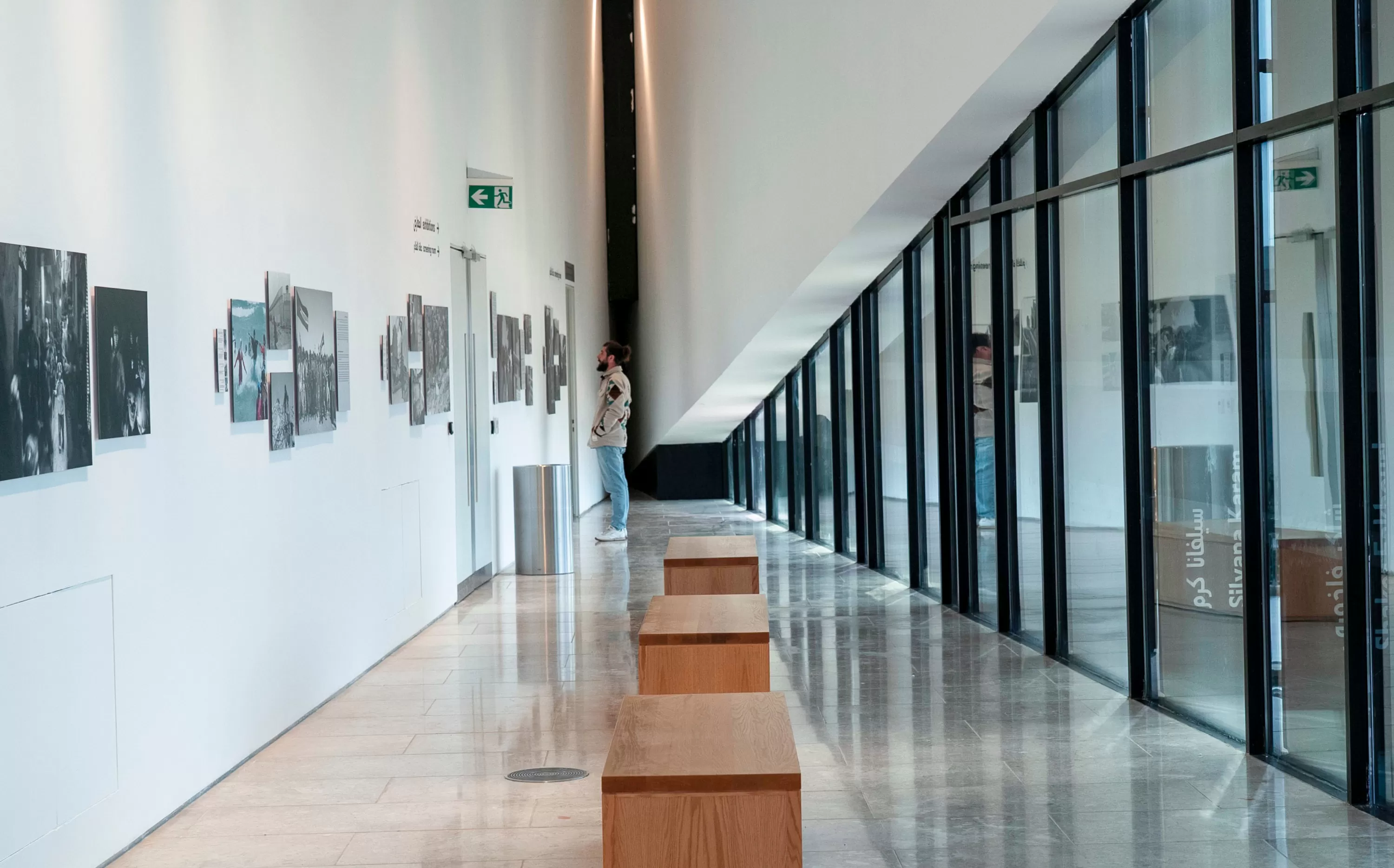
The Palestinian Museum has announced the opening of the exhibition With My Own Eyes, featuring a collection of photographs captured through the lens of French photographer Joss Dray. The exhibition documents different stages of Palestinian life in the occupied land and refugee camps, spanning from the First Intifada to the Oslo years and the Second Palestinian Intifada.
Joss Dray describes herself as a “Resistance Photographer”. At a time when standing with Palestine was considered professional suicide, she courageously documented the atrocities of occupation and the daily acts of Palestinian resistance against Israeli oppression. Through her visual testimony, she captures the suffering of an entire people and their unwavering resilience in the face of occupation.
The exhibition serves as a living archive of the complex relationship between past and present, offering insight into the Palestinian experience—where the ordinary and the epic merge, and where life, death, and waiting exist in an unbroken cycle. It presents images without a chronological sequence or a single narrative arc, inviting viewers to interpret them from their own perspectives and to question which turning points will ultimately lead to freedom.
Photographer Joss Dray stated:
"These photographs were taken over many years, in villages, cities, and refugee camps in Lebanon and Syria. I believe they provide an opportunity to understand the truth about the Palestinian people—but only if the world is willing to see them. The problem is, no one wants to see them, just as they refuse to see the Palestinian people".
She added:
"Through these images, we witness how people lived despite everything—baking their bread, protesting, burying their dead, and visiting cemeteries. These are not just documentary photographs; they cannot be presented without acknowledging the places, or without mentioning Palestine. They are a historical narrative of people—on their land or in exile—who always point back to their homeland".
Exhibition curator Marah Khalifa noted:
"For Palestinians, the ability to document our reality through sound and image was not always available. This left our history vulnerable to distortion, silencing, and erasure—just as it happened during the 1948 Nakba, when people prioritized survival over documentation, ensuring the safety of their loved ones over writing their history. Our lives, our properties, and even the very evidence of our existence—our photographs and records—were stolen before our eyes. The exhibition underscores that Palestine is not a singular tragic narrative, but rather a continuum of millions of individual and collective stories—woven from resistance and a life that is both bitter and inspiring. These photographs encapsulate that essence".
This exhibition comes amid the ongoing genocide in Gaza, at a time when the world is overwhelmed with millions of images, videos, and voice recordings—scenes that appear as though they were taken from horror films. Yet, as Palestinians, we see it differently: what is happening today has happened before. The images we witness now echo the stories we have heard—of the Nakba, the Naksa, and the defining historical moments passed down from our grandmothers and mothers. Every photograph, every cry, every lifeless body, every stone crushing a home, every migration southward, every displacement into tents—it is a story we may not have seen firsthand, but we know by heart.
Due to the current circumstances, including road closures and daily military incursions into cities, villages, and refugee camps, the museum has not held an official opening event. However, the exhibition remains open for visitors who can attend at any time.
The Palestinian Museum is an independent, non-governmental cultural institution dedicated to fostering an open and dynamic Palestinian culture on both local and international levels. It contributes to the production and presentation of new narratives about Palestinian history, culture, and society. The museum also provides a space for creative projects, educational programs, and innovative research, making it one of Palestine’s most significant contemporary cultural initiatives.




